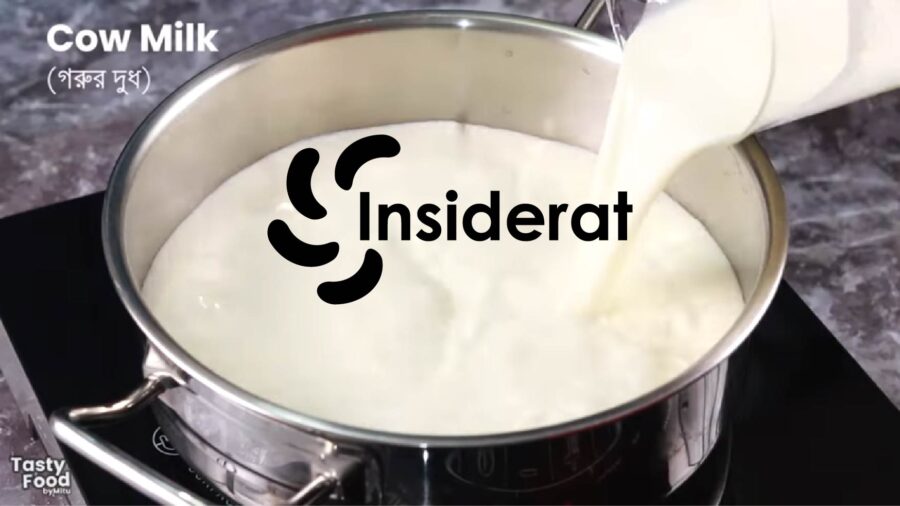How do you make buttermilk out of regular milk
How do you make buttermilk out of regular milk – Ever find yourself ready to bake, only to realize you’re out of a key ingredient? Buttermilk often plays a vital role in recipes, creating that perfectly tender crumb or tangy dressing we love. Fortunately, crafting your own buttermilk from scratch is easier than you might think. With our easy buttermilk recipe, you can make buttermilk at home in just a few simple steps, using ingredients you likely already have in your fridge and pantry. This guide will walk you through the traditional technique of transforming regular milk into homemade, rich, tangy buttermilk with ease, ensuring your culinary creations are never compromised.
Understanding Buttermilk and Its Uses in Cooking
Buttermilk holds a storied place in culinary traditions, evolving from a simple byproduct to a staple in kitchens around the world. Its distinctive tang and creamy texture now bring a delicious complexity to a myriad of dishes, particularly those in the realm of baking. In this section, we’ll peel back the layers of buttermilk’s rich history, its pivotal role in cooking, and how you can create this beloved ingredient in your own home, even when you find yourself without any store-bought buttermilk on hand.
What is Buttermilk?
Originally, buttermilk was the fluid left behind after churning butter from cultured or fermented cream. Today’s buttermilk, widely found in grocery stores, is a cultured dairy product created by introducing lactic acid bacteria into low-fat milk. This fermentation process yields a thickened, tangy liquid that has become a cherished ingredient in both sweet and savory culinary traditions. Whether you’re whipping up a homemade buttermilk pancake batter or tenderizing chicken for fried comfort food, it’s a key element for bringing rich flavors and soft textures to the table.
The Role of Buttermilk in Baking and Cooking
The real magic of buttermilk unfolds in the heat of the oven. The acidity in buttermilk activates baking soda, which in turn gives rise to a variety of baked goods. This reaction results in light, airy textures, setting the stage for moist cakes, fluffy biscuits, and delectable breads. For those seeking that perfect rise and sumptuous crumb, a reliable buttermilk recipe is indispensable. Buttermilk’s culinary capacities don’t end with baking; it’s also a fantastic base for creamy dressings, a tenderizing marinade for proteins, and it can add a pleasant zing to mashed potatoes or soups.
Buttermilk Substitute vs. Store-Bought Buttermilk
While there’s no denying the convenience of premade buttermilk, you might find yourself needing a buttermilk substitute at a moment’s notice. Luckily, making homemade buttermilk is a straightforward affair. The comparison between DIY buttermilk and the commercial variant mostly lies in their respective tang and thickness. A common buttermilk without buttermilk hack involves adding an acid like lemon juice or vinegar to regular milk. Below is a table contrasting the two, providing insight into their uses and benefits:
| Aspect | Homemade Buttermilk Substitute | Store-Bought Buttermilk |
|---|---|---|
| Preparation | Mix milk with lemon juice or vinegar and let sit | Purchase ready-to-use from the dairy aisle |
| Tanginess | Adjustable based on the amount of acid used | Consistently tangy due to culturing methods |
| Texture | Varies, can be thinner than store-bought | Uniformly thick and creamy |
| Convenience | Quick solution when out of buttermilk | No need for preparation |
| Best Used For | Recipes where tang and rise are important | Recipes requiring precise consistency and flavor |
Whether opting for homemade or reaching for the store-bought variety, buttermilk has an undeniable prowess in the kitchen. Its versatility and flavorsome profile ensure its place as an ingredient beloved by cooks and bakers everywhere.
How Do You Make Buttermilk Out of Regular Milk
The allure of **making buttermilk at home** can be a game-changer for cooking enthusiasts keen on achieving that perfect tang in their dishes. The process itself is a testament to the magic of kitchen chemistry. Transforming ordinary milk into rich, creamy buttermilk requires nothing more than some milk and a bit of acid, such as lemon juice or vinegar. It’s a simple solution that replicates the distinct flavor and texture of traditional buttermilk, ideal for recipes that thrive on the subtle sharpness and tenderizing effect it provides. Let’s delve into the **buttermilk recipe** that brings this culinary staple within your grasp, using ingredients undoubtedly present in your pantry.
- Pour the Milk: Start by measuring the desired amount of milk. Any milk will do, although whole milk yields a richer buttermilk.
- Add the Acid: For each cup of milk, stir in one tablespoon of lemon juice or vinegar. This will create the necessary acidic environment for **making buttermilk with milk**.
- Stir and Settle: Mix the ingredients gently and allow the mixture to sit for about 10 minutes at room temperature. During this time, the acid will begin to curdle the milk, a clear sign that your homemade buttermilk is coming to life.
- Final Consistency Check: After the mixture has rested, a gentle stir will reveal a thicker and slightly clumpy texture — hallmarks of buttermilk from milk.
A popular adage in culinary circles is that the best ingredients are often the ones you prepare yourself. This is particularly true when it comes to **buttermilk at home**, not only because of the ease and rapidity with which it can be made, but also due to the unbeatable freshness it bestows upon dishes such as pancakes, biscuits, and dressings. Enthusiasts who favor the DIY approach will find this method gratifying, as it allows for more control over the taste and composition of this versatile ingredient. Whether it’s a spur-of-the-moment baking project or a planned meal, this **buttermilk recipe** will ensure you have high-quality buttermilk ready when you need it.
Step-by-Step Buttermilk Recipe: Homemade Buttermilk from Scratch
Embarking on the journey of creating your own buttermilk at home is a rewarding experience. Not only do you obtain a fresh buttermilk alternative, but you also gain the satisfaction of learning how to make homemade buttermilk which serves as a pivotal ingredient in numerous culinary endeavours. Let’s savour each step, from selecting your components to nurturing the mixture into the perfect tangy buttermilk.
Gathering Your Ingredients
To begin, let’s ensure your kitchen is stocked with the essentials. At the core of this process are just two simple ingredients. You’ll need a cup of regular milk — whole milk is often preferred for its rich texture — and an acid. The acid can either be fresh lemon juice or distilled white vinegar, both readily available and capable of promoting the necessary chemical reaction. These finely-picked selections come together harmoniously to initiate the transformation of ordinary milk into a delightful buttermilk with lemon juice or buttermilk with vinegar, setting the stage for culinary magic.
Combining Milk and Acid: The Chemical Reaction
With your ingredients at the ready, we’ll now observe the fascinating transformation. When you introduce either lemon juice or vinegar to the milk, it immediately starts a reaction where lactic acid begins to work on the protein in the milk, causing it to curdle and thicken. This process, mirroring the fermentation that occurs naturally in traditional buttermilk, is quick to bring about those sought-after properties of buttermilk — the tangy taste and creamy consistency that will elevate any recipe calling for this versatile liquid.
Tips for Perfect Homemade Buttermilk
For those aiming to achieve buttermilk perfection, here are some golden nuggets of guidance. Temperature matters; use room-temperature milk to ensure a more reactive blend. After mixing the milk with the acid, let it rest for about ten minutes until you see the milk curdle and turn slightly thicker. This rest period is crucial as the reaction occurs. Finally, strike the right balance—a tablespoon of acid per cup of milk is the golden ratio, setting you up for success as you create an impeccable buttermilk alternative for all your cooking and baking delights.
Conclusion
The journey to creating a flavorful homemade buttermilk is not just a nod to a time-honored culinary tradition; it is also a remarkably straightforward process that can be accomplished with ease in any home kitchen. As we have seen, the utility of having a go-to easy buttermilk recipe cannot be understated. Whether you’re facing an empty refrigerator shelf or you’re mid-recipe and in a pinch, the knowledge that regular milk can be quickly transformed into tangy buttermilk is immensely rewarding.
For those moments when the real thing is unattainable, a buttermilk substitute made from scratch ensures that your baked goods, marinades, and dressings are never compromised. This homemade alternative not only mimics the characteristic taste and texture of traditional buttermilk but does so without necessitating a trip to the store. In the fast-paced rhythm of modern living, this kind of kitchen hack is invaluable, opening the door to uninterrupted culinary exploration.
In conclusion, mastering the art of making buttermilk from regular milk is a skill that promises to enhance your cooking and baking ventures. It consolidates your resourcefulness as a home cook and guarantees that each recipe is infused with the fullest flavor, even when your pantry is less than fully stocked. Consider this method a secret weapon in your culinary arsenal, ensuring you’re always prepared to create delicious, heartwarming food that brings smiles to the table.
FAQ
What is the traditional method for making buttermilk from regular milk?
The traditional method for making buttermilk from regular milk involves adding an acid, such as lemon juice or vinegar, to milk. Typically, you’ll add about 1 tablespoon of acid to 1 cup of milk, stir the mixture, and let it sit for about 5-10 minutes until the milk begins to curdle and thicken, creating a homemade buttermilk.
What is Buttermilk?
Buttermilk is a fermented dairy product traditionally left over after churning butter from cream. Today, most buttermilk is cultured, made by adding lactic acid bacteria to milk, which results in a tangy, thickened liquid that is commonly used in baking and cooking for its acidic properties that can tenderize and add flavor to food.
The Role of Buttermilk in Baking and Cooking
In baking and cooking, buttermilk is prized for its ability to react with baking soda, acting as a leavening agent that helps baked goods rise. Its acidity also helps tenderize gluten, making for softer baked goods like pancakes and biscuits, and it can add a pleasant tang to dressings, marinades, and more.
Buttermilk Substitute vs. Store-Bought Buttermilk
Homemade buttermilk substitutes, usually made from milk and an acid, can replicate the consistency and acidity of store-bought buttermilk. While store-bought buttermilk may have more complex flavors due to the culturing process, substitutes are excellent when the real thing is unavailable or you need a quick solution.
How Do You Make Buttermilk Out of Regular Milk?
To make buttermilk out of regular milk, simply measure 1 cup of milk and stir in 1 tablespoon of acid, such as lemon juice or white vinegar. Let the mixture stand at room temperature for about 10 minutes, until the milk slightly curdles and becomes tangy. It’s now ready to use as homemade buttermilk in your recipes.
Gathering Your Ingredients
To make homemade buttermilk, you’ll need just two main ingredients: milk (whole milk is preferred for richness, but any milk will work) and an acid such as lemon juice or distilled white vinegar. Ensure you have measured both before starting the process.
Combining Milk and Acid: The Chemical Reaction
When you combine milk with an acidic ingredient, lactic acid bacteria present in the milk start to ferment lactose, the sugar in milk, leading to the production of lactic acid. This acidification causes the proteins in the milk, mainly casein, to coagulate, thickening the milk and giving it the tangy flavor characteristic of buttermilk.

